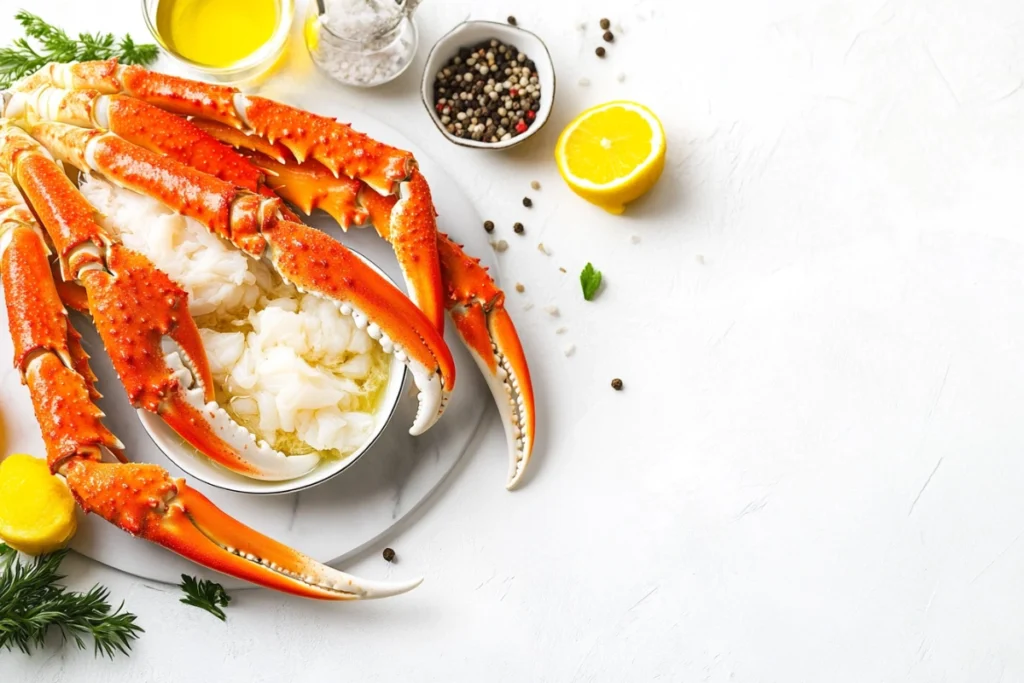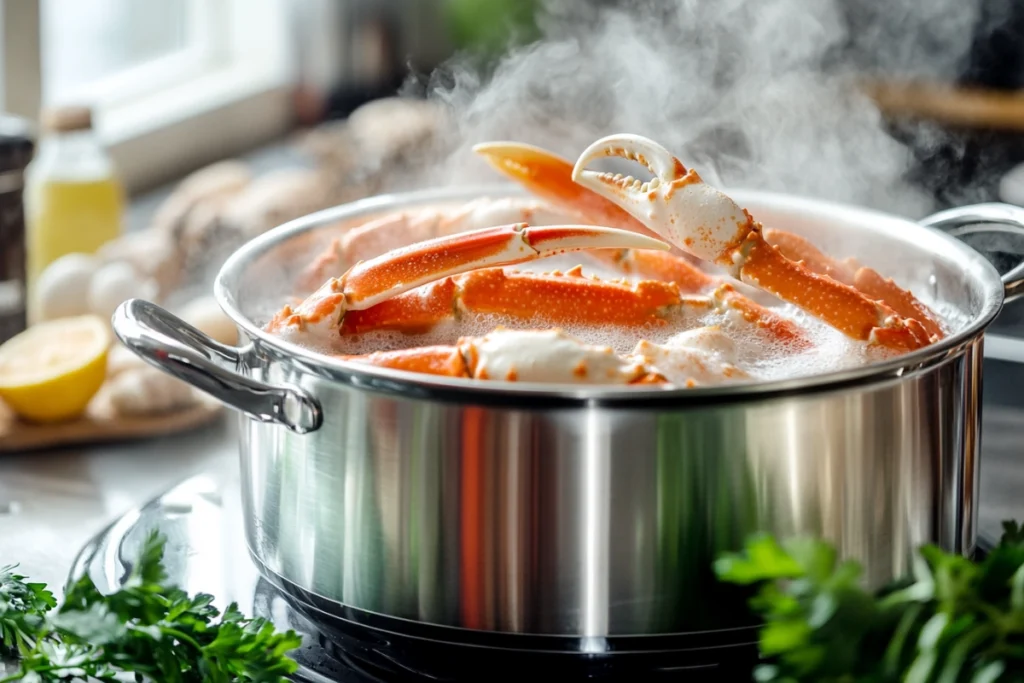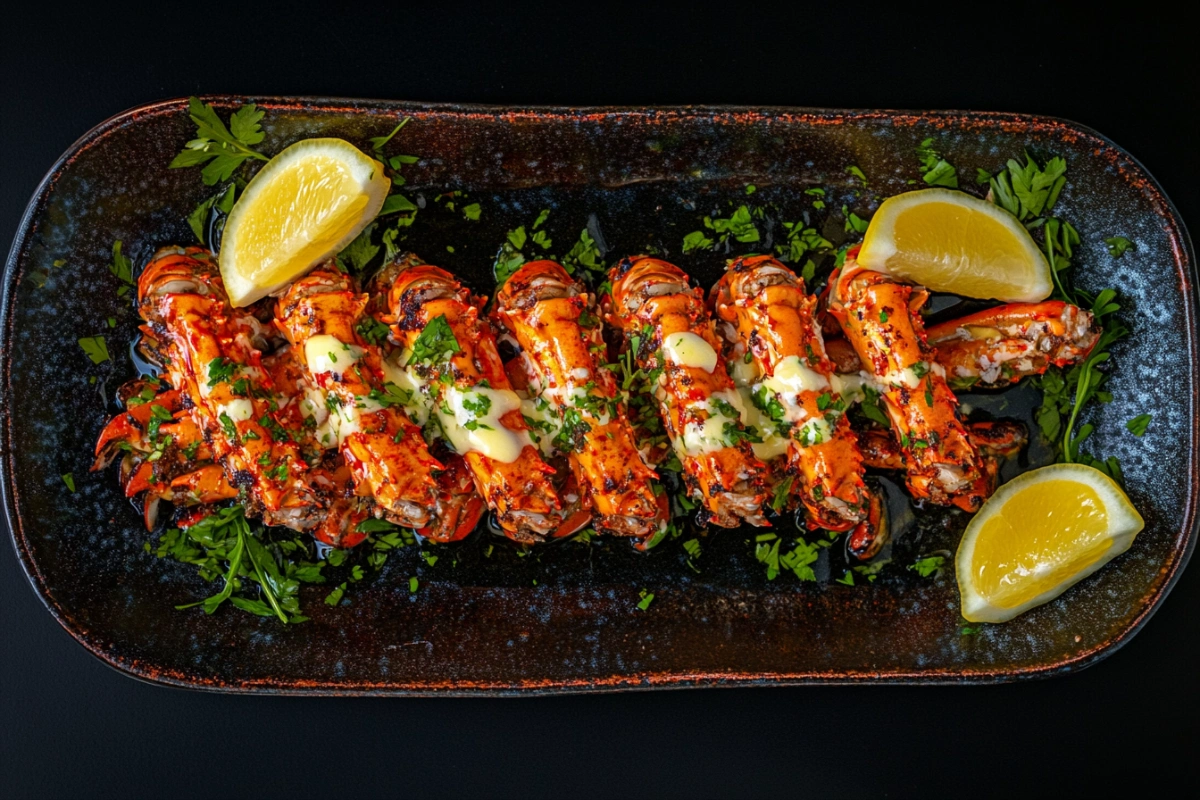Seafood lovers often wonder, is snow crab legs good compared to other popular crab varieties? If you’re craving a flavorful, healthy seafood choice, snow crab might be your next favorite. This article explores whether crab legs are a top pick for health, taste, and nutritional value.
We’ll break down the nutritional benefits, health perks, cooking tips, and comparisons with other crab legs so you can make an informed choice. Let’s dive into the world of crab legs and find out if they truly deserve a spot on your plate!
Introduction to Snow Crab Legs
Snow crab legs are a popular seafood delicacy known for their mild sweetness and tender texture. Found primarily in the cold waters of the North Atlantic and North Pacific, these crabs boast long, slender legs packed with delicate white meat. But is crab legs good for everyday meals, or is it just a special-occasion treat?
What Are Snow Crab Legs?
Snow crab, often called opilio crab, belong to the family of crustaceans commonly harvested for their meat. Their shells are thinner than king crab legs, making them easier to crack open. The meat inside has a sweet, briny taste, ideal for seafood dishes.
These crabs get their name from the snow-white meat inside their shells. Their legs are often sold pre-cooked and frozen, making them a convenient choice for home cooks.
Brief Overview of Snow Crab Legs Popularity
Snow crab legs have gained popularity not just for their taste but also for their affordability compared to king crab legs. Restaurants often serve them in seafood platters and buffets, while home chefs love them for their ease of preparation.
But why the buzz? Beyond taste, many seafood enthusiasts seek nutritional value and health benefits when choosing crab legs. That leads to the big question—is crab legs good for you? Let’s explore deeper in the next section!
Nutritional Value of Snow Crab Legs
Snow crab are not just a delight for seafood lovers—they pack impressive nutritional value. If you’re wondering, is snow crab good for a healthy diet? The answer leans toward yes, thanks to their rich nutrient profile.
Nutritional Content of Snow Crab Legs (Per 100g)
Here’s a detailed breakdown of the nutritional content of crab legs per 100 grams:
| Nutrient | Amount |
|---|---|
| Calories | 90 kcal |
| Protein | 18g |
| Fat | 0.8g |
| Carbohydrates | 0g |
| Vitamin B12 | 3.3mcg (138% DV) |
| Zinc | 5.5mg (50% DV) |
| Selenium | 37.5mcg (68% DV) |
Macronutrients and Calories in Snow Crab Legs
Snow crab legs are low in calories but rich in essential nutrients, as shown in the table above. Their high protein content makes them perfect for muscle maintenance, while the zero-carb profile fits well in low-carb diets.
Essential Vitamins and Minerals Present
Snow crab are packed with vitamins and minerals, especially:
- Vitamin B12: Vital for nerve health and energy production.
- Zinc: Helps with immune support and wound healing.
- Selenium: Acts as a powerful antioxidant, protecting cells.
Is Snow Crab Legs Good for a Healthy Diet?
Absolutely! With high protein and low fat content, crab legs can support various dietary goals, from weight loss to muscle gain. Their richness in omega-3 fatty acids further promotes heart health and reduces inflammation.
If you’re curious about more seafood nutrition facts, check out this Snow Crab Legs Guide for more insights.
Macronutrients and Calories in Snow Crab
Snow crab legs are low in calories but rich in essential nutrients. A 100-gram serving provides roughly:
- Calories: 90
- Protein: 18g
- Fat: Less than 1g
- Carbohydrates: 0g
This lean protein source makes Snow crab taste ideal for muscle maintenance and weight management. Plus, their zero-carb content fits well in low-carb diets.
Essential Vitamins and Minerals Present
Snow crab legs are loaded with essential vitamins and minerals, such as:
- Vitamin B12: Essential for nerve health and energy production.
- Zinc: Supports immune function and wound healing.
- Selenium: A powerful antioxidant for cell protection.
These nutrients make Snow crab taste an excellent seafood protein source. However, they can be moderately high in sodium, so be mindful if you’re watching salt intake.
Is Snow Crab Legs Good for a Healthy Diet?
Absolutely! With their high protein and low fat profile, Snow crab taste can support various dietary goals, from weight loss to muscle gain. Their richness in omega-3 fatty acids further promotes heart health and reduces inflammation.
For more information about delicious crab dishes, check out this Crab Brulee Recipe for creative inspiration.

Health Benefits of Eating Snow Crab Legs
The question is snow crab good extends beyond taste. These crustaceans offer several health benefits worth exploring.
Rich Source of Lean Protein
If you need a lean protein source, Snow crab taste are an ideal pick. With 18g of protein per 100 grams, they help:
- Build and repair muscle.
- Keep you fuller for longer.
- Support metabolism and fat burning.
This makes them perfect for athletes or anyone focused on muscle maintenance.
Heart-Healthy Omega-3 Fatty Acids
Snow crab contain a decent amount of omega-3 fatty acids, known for their cardiovascular perks. These healthy fats:
- Lower bad cholesterol (LDL).
- Reduce inflammation.
- Improve blood vessel health.
Seafood rich in omega-3s, like Snow crab taste, can support heart health when included regularly in a balanced diet.
Other Health Perks: Immunity and Bone Health
The vitamins and minerals in crab legs, especially zinc and selenium, play a role in:
- Boosting immune defenses.
- Strengthening bones.
- Protecting cells from oxidative stress.
So, is crab legs good? Without a doubt! They’re not just a tasty treat but a nutritional powerhouse. For another crab dish idea, you might enjoy Garlic Butter Snow Crab Legs Recipe.
Are Snow Crab Legs Safe to Eat?
When considering seafood, safety is often a top concern. So, is crab legs good and safe for regular consumption? Generally, Snow crab taste are a safe and nutritious seafood choice when prepared and consumed properly. However, there are some points to keep in mind.
Mercury Content in Snow Crab Legs
Unlike larger fish like tuna, Snow crab taste contain very low mercury levels, making them safer for frequent consumption. This makes them a great alternative for those concerned about mercury exposure, especially for children and pregnant women.
However, sourcing from reputable suppliers matters. Always choose wild-caught crab legs from regions with sustainable practices for the safest option.
Allergies and Safety Considerations
Shellfish allergies can be serious. If you have a crustacean allergy, avoid snow crab altogether, as reactions can range from mild itching to severe anaphylaxis.
Additionally, Snow crab taste are often pre-cooked and frozen. Consuming improperly stored crab legs could lead to foodborne illnesses. Always ensure they are:
- Stored at freezing temperatures.
- Cooked or reheated thoroughly.
By following these steps, you can enjoy Snow crab taste without worry.
For more seafood preparation tips, explore this Snow Crab Legs Guide for detailed instructions on safe handling and cooking.
How Do Snow Crab Legs Compare to Other Crab Legs?
Curious how crab legs measure up against other popular crab varieties? If you’re wondering, is crab legs good compared to king crab or Dungeness crab, here’s a detailed breakdown.
Snow Crab vs. Alaskan King Crab Legs
Alaskan king crab legs are known for their massive size and rich, sweet meat. However, crab legs have:
- A milder, sweeter taste.
- Thinner shells, making them easier to crack.
- More affordable pricing.
King crab legs often win on impressive presentation, but crab legs are perfect for casual dining and budget-friendly seafood feasts.
Snow Crab vs. Dungeness Crab Legs
Dungeness crab legs differ from crabs legs in both taste and texture:
- Dungeness meat is sweeter and slightly nutty.
- Snow crab meat is lighter and more delicate.
- Dungeness crabs offer more body meat, while snow crabs focus on leg meat.
When deciding, it comes down to personal preference. If you want tender, easy-to-crack meat, Snow crab taste are a top pick.
Pros and Cons of Snow Crab Legs Compared to Alternatives
Pros:
- Affordable compared to king crab.
- Lower in fat and calories.
- Easy to cook and serve.
Cons:
- Less meat per leg compared to king crab.
- More delicate flavor, which may not satisfy bold seafood lovers.
Ultimately, is Snow crab taste good for your next meal? Yes! They offer a great balance between flavor, nutrition, and affordability.
For more crab comparisons and recipes, consider checking out the King Crab vs. Snow Crab Platter Guide.
How to Cook Snow Crab Legs
Cooking snow crab is surprisingly easy, making them perfect for both seafood beginners and experienced chefs. But is snow crab taste good when cooked at home? Absolutely! They come pre-cooked in most stores, meaning you only need to reheat them while enhancing their natural flavors.
Best Cooking Methods: Boiling, Steaming, Baking
There are several simple ways to cook crab legs:
- Boiling: Bring a large pot of salted water to a boil. Add the crab legs and cook for 4-5 minutes. This method keeps the meat juicy and tender.
- Steaming: Steam crab legs in a pot with an inch of water for about 5 minutes. This method retains more flavor while keeping the meat delicate.
- Baking: Place crab legs on a baking sheet with melted butter and seasonings. Bake at 375°F for 10 minutes, perfect for a buttery, rich taste.
Cooking Tips for Flavorful Snow Crab Legs
To make your snow crab legs unforgettable:
- Don’t overcook! Overheating can make the meat tough.
- Add a squeeze of lemon or fresh herbs for a zesty twist.
- Infuse with garlic butter by brushing the legs before cooking.
These methods ensure you get the best taste, answering the question, is Snow crab taste good for home cooking? Yes, they’re both easy and delicious!

Best Ways to Serve Snow Crab Legs
Once you’ve cooked your crab legs to perfection, it’s time to think about presentation and side dishes. So, is Snow crab taste good for an elegant dinner or a casual feast? Definitely—it’s versatile enough for both occasions.
Classic Dipping Sauces for Snow Crab Legs
Dipping sauces can elevate the sweet, tender crab meat to a whole new level. Here are some popular options:
- Garlic Butter Sauce: Melt butter with minced garlic and a pinch of salt for a rich, savory dip.
- Cocktail Sauce: A tangy blend of ketchup, horseradish, and lemon juice.
- Lemon-Herb Butter: Melted butter with lemon zest, parsley, and thyme for a fresh, citrusy twist.
A warm butter sauce pairs wonderfully with crab legs’ delicate sweetness.
Side Dishes That Pair Well with Snow Crab Legs
Pair your crab legs with complementary sides for a complete meal:
- Steamed Asparagus: Light and healthy.
- Corn on the Cob: Sweet corn balances the briny crab flavor.
- Garlic Mashed Potatoes: Creamy and indulgent.
- Coleslaw: Crisp, tangy slaw cuts through the richness.
Serving crab legs with these sides creates a balanced seafood feast. Whether for a fancy dinner or a casual backyard seafood boil, they’re a hit.
Looking for creative ways to serve crab? Try this Snow Crab Legs Recipe Guide for more inspiration!
Where to Buy Quality Snow Crab Legs?
Wondering whether snow crab are a good choice when bought locally or online? The secret to enjoying great snow crab lies in finding high-quality, fresh, or properly frozen snow crab .
Frozen vs. Fresh Snow Crab Legs
Snow crab come in two main forms, each with its own benefits:
- Frozen Snow Crab Legs: These are pre-cooked and flash-frozen to lock in their sweet, tender meat. They are often easier to find and come at a more affordable price.
- Fresh Snow Crab Legs: Offering the best flavor and texture, fresh crab can be harder to come by. You’ll likely find them at specialty seafood markets or in coastal regions.
Both types can be just as tasty, provided you buy from trusted sources. The real question is whether crab legs is suitable for home cooking — and the answer depends on the quality of the legs you purchase.
Best Places to Purchase Snow Crab Legs Online and Locally
If you’re looking for high-quality crab legs, consider the following options:
- Local Seafood Markets: For the freshest catch, especially if you live near coastal areas.
- Supermarkets: Many carry frozen snow crab in the seafood section.
- Online Retailers: Websites like Lobster Anywhere and Alaskan King Crab Co. offer premium, direct-to-door delivery.
Be sure to check for sustainable sourcing and customer reviews when shopping online. If you’re planning a special dinner, aim to get the best quality available.
Sustainability and Ethical Considerations
When asking, is snow crab good, it’s essential to consider the environmental impact. Sustainable seafood choices help protect ocean ecosystems and ensure future generations can enjoy these delicacies.
Sustainable Fishing Practices for Crab Legs
Sustainability matters in snow crab fishing. Responsible harvesting methods focus on:
- Trap Fishing: This method reduces bycatch, ensuring other species aren’t harmed.
- Quota Systems: Limiting how much crab can be harvested annually prevents overfishing.
- Regional Management: Fisheries like those in Alaska follow strict guidelines to maintain healthy crab populations.
Look for certifications such as the Marine Stewardship Council (MSC) label when purchasing crab legs.
Environmental Impact of Snow Crab Harvesting
While crab legs are a delicious seafood choice, harvesting them can impact marine ecosystems if not properly managed. Overfishing and habitat disruption can occur in poorly regulated areas.
By choosing sustainably sourced snow crab , you’re supporting:
- Healthier crab populations.
- Reduced ecosystem damage.
- Fair working conditions for fishers.
So, is crab legs good for the environment? It can be—as long as you buy from ethical sources prioritizing sustainability.
For more eco-conscious seafood choices, explore the Snow Crab Legs Sustainability Guide to make informed purchasing decisions.

